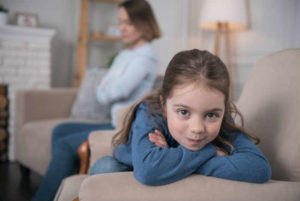











Object relations theory refers to a theoretical orientation that is used by therapists who are trained using psychoanalytic theory as a foundation. This theory asserts that our experiences early on in life with objects, including people and things, subconsciously form relationships with those objects, impacting our thoughts and standards throughout our lives as adults.

Mental health professionals use a variety of techniques when working to help people improve their emotional health. Depending on where and how they were trained, therapists will use various models of therapy that work on addressing a person’s issues from different perspectives to provide them with relief. Object relations is one particular model. Psychoanalytic therapists work to help a person uncover their conscious and unconscious thoughts and feelings to help people unlock possible repressed fears and conflicts that may be contributing to their distress.
Therapists applying the object relations model believe that negative experiences in childhood contribute to a person repressing certain feelings and that this repression can also cause people to engage in certain maladaptive ways of thinking and behaving. Psychoanalytic therapists believe that this is an unintentional response meant to protect the patient from feeling pain or distress. The patient is typically unaware of how painful past experiences are affecting their current thoughts and relationships.
Object relations theory takes the fundamental principles of psychoanalysis and uses them to provide a treatment model that helps a person to identify how their innermost thoughts about themselves may be impacting their relationships, or vice versa.
In object relations theory, therapists help people identify patterns in their lives that may be impacting their relationships with others. Therapists refer to significant others in a person’s life, particularly a person’s primary caregiver (mother, father, etc.) as the object in object relations theory. The focus of this kind of treatment centers around early attachment relationships between a person and their caregivers during infancy, as therapists believe that the relationship that a person has with their caregivers during infancy can help shape their personality and the way they interact in interpersonal relationships throughout their lives.
An object relations therapist will help a person begin to understand how they, during infancy, thought about themselves, about the object or caregiver, and the relationship between the two of them. Therapists will introduce the idea of representations, or the way a person perceives themselves, and their relationships with others. For example, a person may have the following representations about their relationship with their mother:
An object relations therapist will help a person begin to uncover the representations they have about their early-life caregivers, and how these relationships may have shaped the way they feel about themselves and their relationships with others.
In addition to this, therapists help people begin to understand the term “splitting.” This describes how a person may have, during infancy, been unable to understand the complexity of their parents initially, causing them to see others (and eventually themselves) as all good or all bad with no room for both. Over time, a child may be able to blend these perceptions of their parents and ultimately other people that they are in relationships with, if their experience with their mother (or another primary caregiver) was “good enough.”
If they saw their primary caregiver as obtaining more positive and supportive qualities than negative, they may be able to make that shift to have less of a split perception of them. If, however, they don’t perceive their primary caregiver as “good enough,’ they can continue to engage in splitting in this and other relationships, and struggle to see the gray in their world of black and white.
Therapists believe that splitting is often a defense mechanism that creates instability in relationships because a person may struggle to see those closest to them as complex figures who are a combination of “good” and “bad” qualities, instead seeing them as good only when they are doing good and bad when they are doing something that the person perceives to be “bad.”
This “all or nothing” mentality is theorized to lead to conflictual relationships as evidenced by mood swings, threatening behavior, and struggles with healthy conflict resolution. This is just one of the focus points that an object relations therapist will use to help a person develop insight into some patterns that may have resulted from deep feelings in infancy, and having this awareness can often help a person begin to make changes in their behavior.
The key to object relations therapy is to help a person begin to develop insight into problematic patterns in their interpersonal life and to help them better understand these issues and how to improve them. Helping shed light on how very early attachment-related concepts may have impacted their ability to function in their current relationships can help a person understand themselves and others in a whole new way, and can lead to the development of a more realistic way of seeing their present situations.
This can alleviate a lot of pain and suffering. Therapists work to help people recognize how they may have used splitting to develop representations of themselves or others that create conflict and distrust in their current relationships. They can also help a person begin to identify the “shades of gray” in themselves and others to help them have more meaningful connections with other people and to feel better about themselves.
Object relations is a psychological theory that deals with helping a person safely uncover deeply repressed psychological patterns, which can be difficult for many people to be motivated to do, or to tolerate. This type of therapy has been successful in the treatment of addictions, personality disorders, and other cases where a person may be craving insight into how their past is shaping their future.
It is also used in family therapy and couples counseling to help people begin to develop healthier patterns in their interpersonal relationships. This therapy is mostly used with adults, as children and teens may not have enough psychosocial maturity to begin to understand the deep processes of their representations of objects or people in their lives, let alone the way they perceive themselves. While this treatment has less research done on its effectiveness, it is based on a theory that has been devised by early psychological historians and does provide some people with the support they need to identify patterns in their lives and make lasting changes.
If you are someone who with patterns of feeling stuck in your relationships or has a history of highly conflictual relationships, mood swings, and addiction-related symptoms, a psychoanalytic approach like object relations could help you uncover some of the deep messages you have about yourself and others.
These messages could then be changed to improve these parts of your life. Object relations work involves developing real trust and rapport with your therapist so that you can feel comfortable exploring and uncovering painful thoughts and feelings that began very early on in your life. An object relations therapist will be supportive and empathetic, but will also challenge you to rethink patterns that may not be useful or healthy in your life.
Sources